- Home
- international
- news
- A rare look inside Transnistria, the breakaway republic that borders Ukraine led by Russian-backed separatists
A rare look inside Transnistria, the breakaway republic that borders Ukraine led by Russian-backed separatists
Charles R. Davis

- Transnistria broke away from the Republic of Moldova in 1992, aided by Russian intervention.
- Although declaring itself a "state," it is not recognized by any other country.
TIRASPOL, TRANSNISTRIA — Just 48 hours before unidentified actors carried out attacks in late April in Transnistria, Insider traveled to the Kremlin-backed breakaway republic — inside Moldova, along the border with Ukraine — to see what life is like in a territory that is home to roughly 1,500 Russian soldiers.
Transnistria is a Russian-backed separatist region in Moldova.
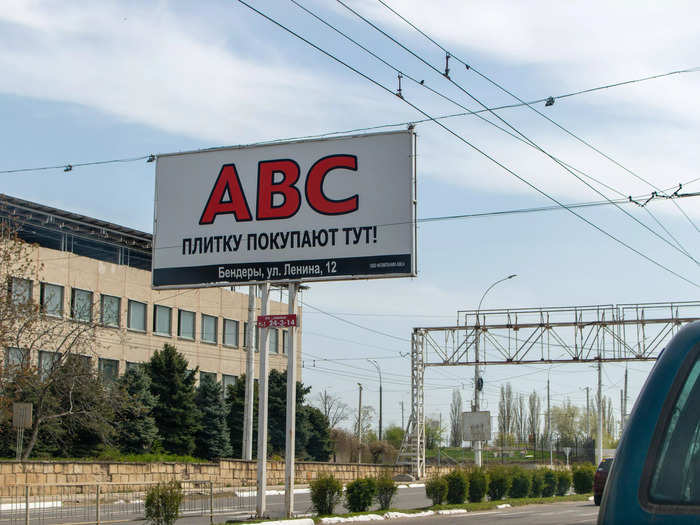
Sign for a tile company in the city of Bender. Charles Davis/Insider
It borders Ukraine and is home to more than 300,000 people.
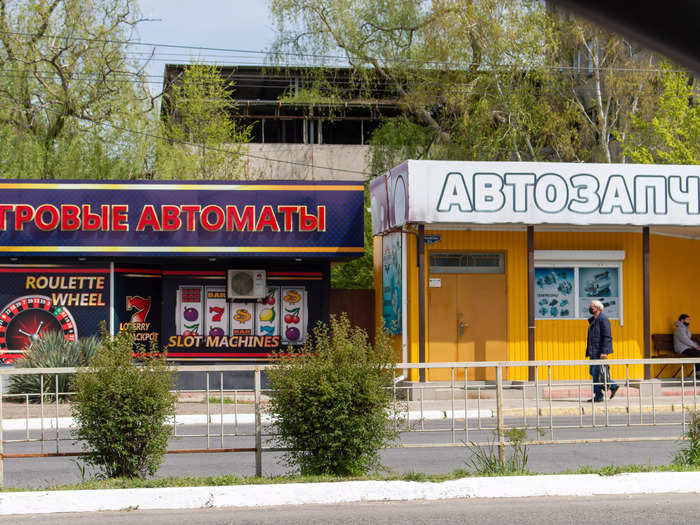
Casino and bus station in Bender Charles Davis/Insider
Transnistria declared itself an independent nation after a brief war in 1992.
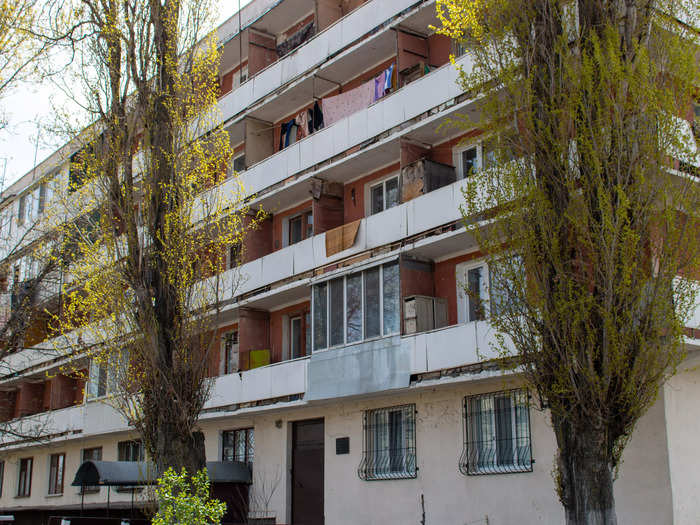
Apartment building in Bender Charles Davis/Insider
The war came after Moldova declared independence from the Soviet Union.

Apartment building in Bender. Charles Davis/Insider
Newly independent Moldova had declared Romanian to be its official language.
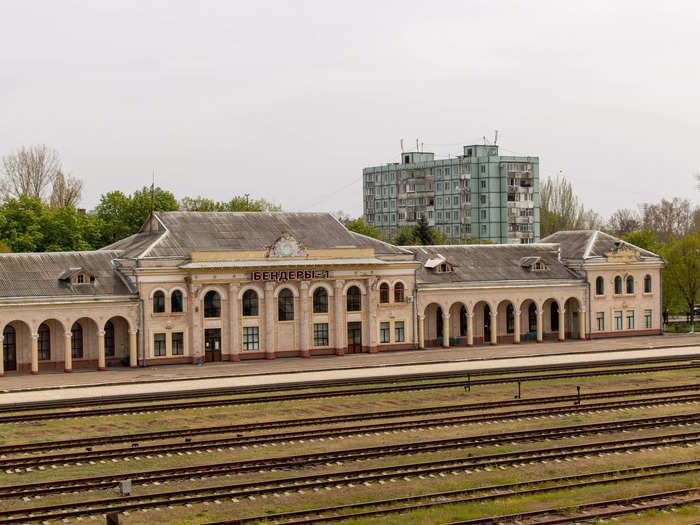
Cargo train station in Bender Charles Davis/Insider
Russia then intervened, ostensibly to protect the rights of Russian speakers in Transnistria.
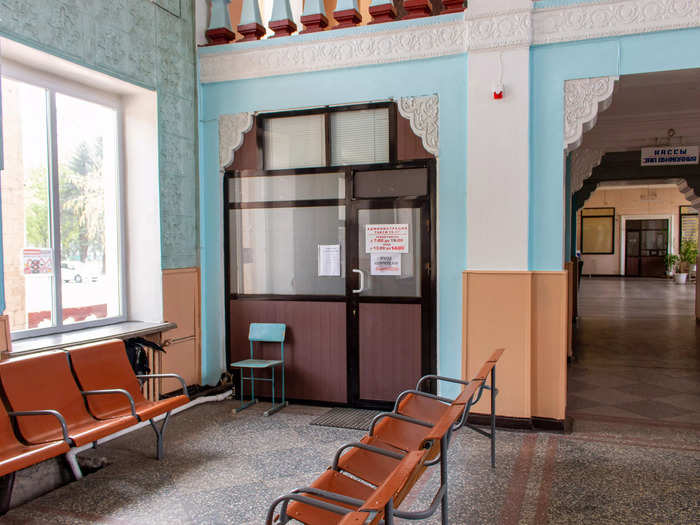
Empty cargo train station in Bender. Charles Davis/Insider
Transnistria's claimed sovereignty is not recognized by any nation, including Russia.
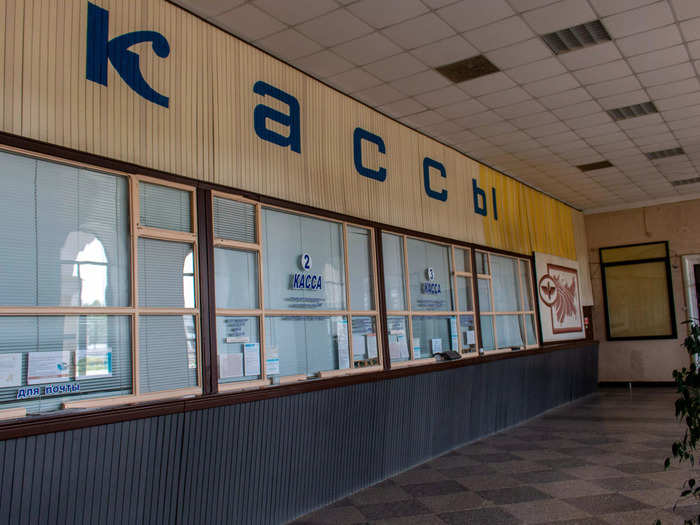
Closed ticket window at Bender train station Charles Davis/Insider
But at least 1,500 Russian troops are believed to be stationed in the region as "peacekeepers."
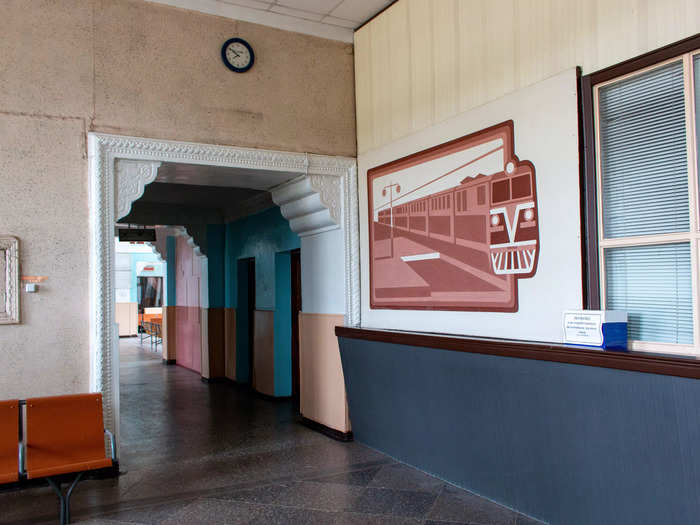
Cargo train station in Bender Charles Davis/Insider
Peacekeepers with armored vehicles are stationed at the de facto border between Moldova and Transnistria.
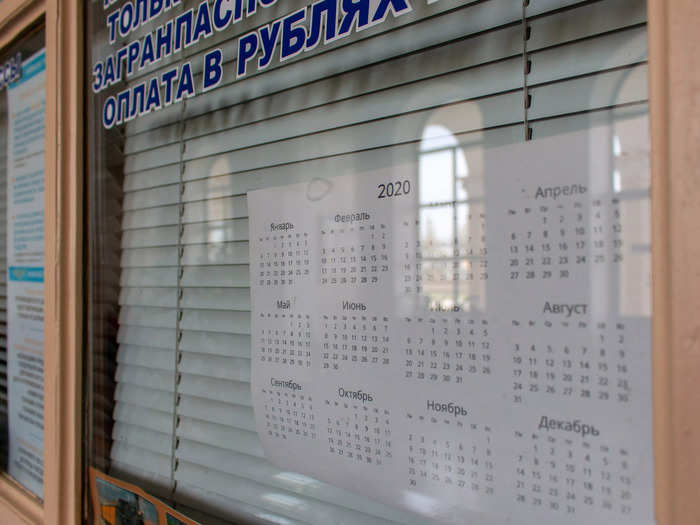
Calendar from 2020 at Bender train station Charles Davis/Insider
Transnistria is not able to stamp passports, so foreign visitors are issued a piece of paper informing them how long they can stay.
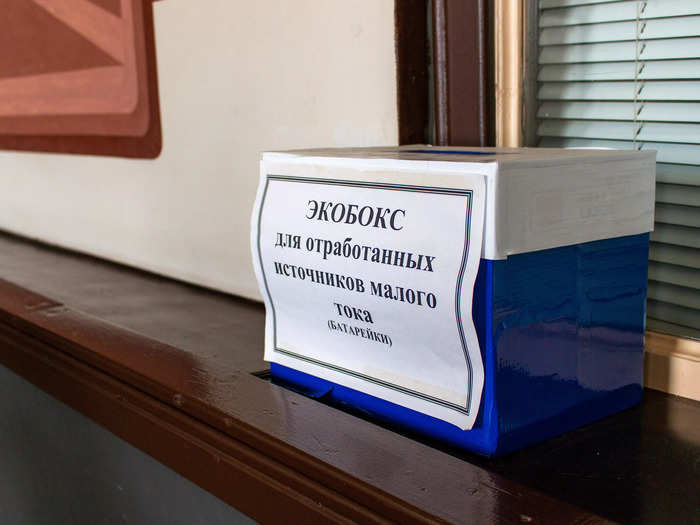
Recycled battery box at Bender train station Charles Davis/Insider
When Insider visited, authorities asked no questions about the reporter's US passport, allowing them to stay for up to 12 hours.
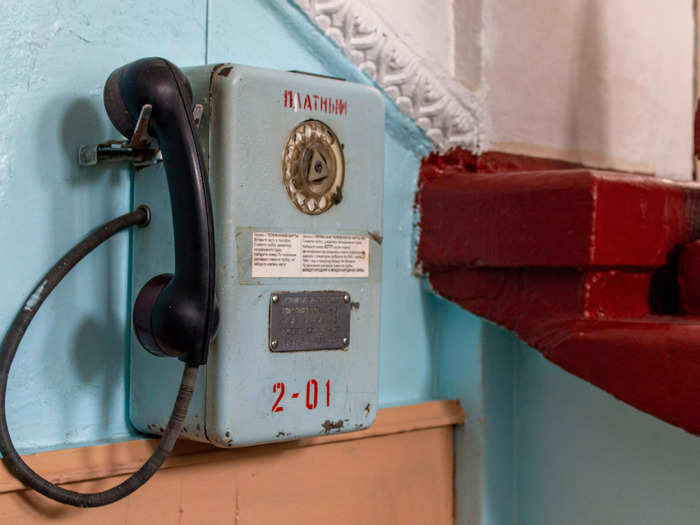
Soviet-era telephone at Bender train station Charles Davis/Insider
Soon after Insider's visit, Transnistrian authorities reported a series of explosions that they blamed on outside elements.
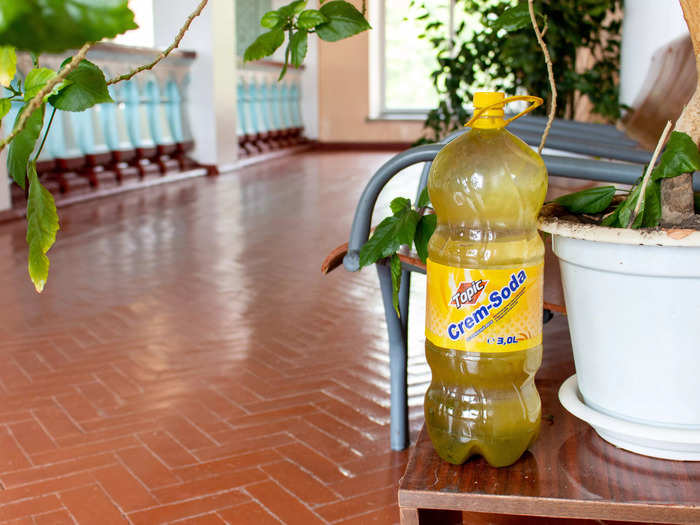
Moldovan soda at Bender train station Charles Davis/Insider
Russian officials have claimed they intend to conquer southern Ukraine in part to connect Transnistria to Crimea.
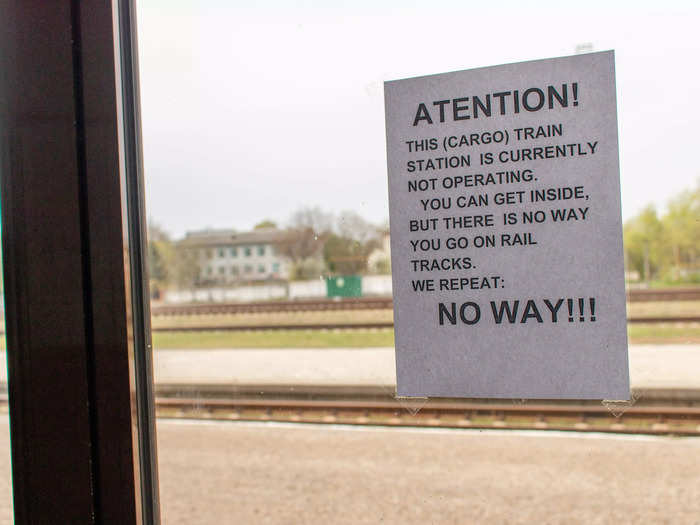
Sign at Bender train station Charles Davis/Insider
Russia's stated intentions have sparked concern that a new war could break out in Transnistria.
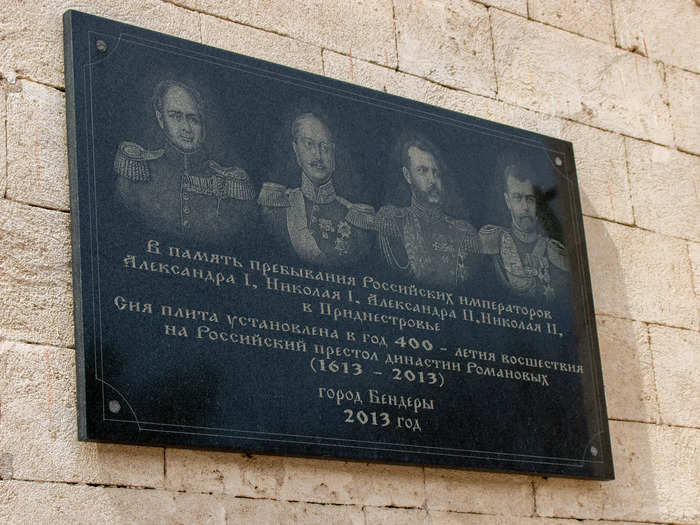
Sign commemorating Russian czars Charles Davis/Insider
Transnistria was the most heavily industrialized part of Moldova under the Soviet Union.
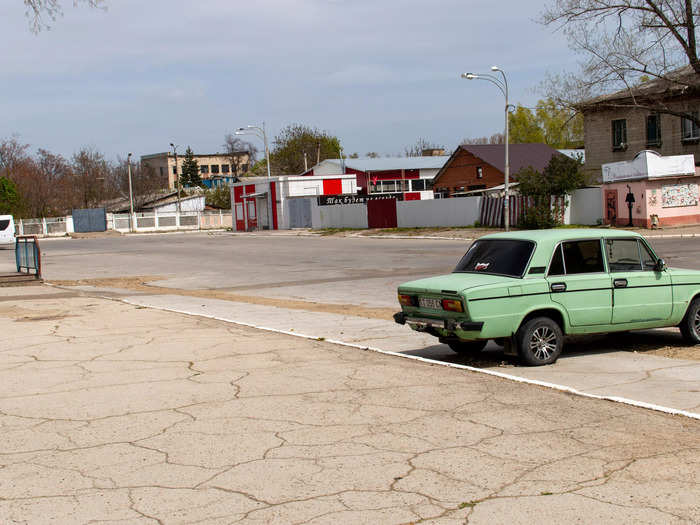
Parking lot at Bender train station Charles Davis/Insider
Today it continues to provide the majority of Moldova's electricity, powered by free Russian gas.
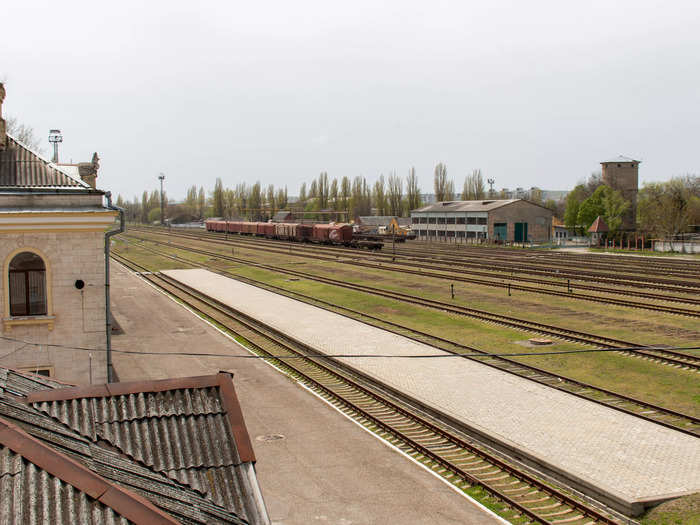
14 tracks at the Bender train station Charles Davis/Insider
Transnistria has a military of its own, believed to number up to 10,000 soldiers, with many more available on reserve.
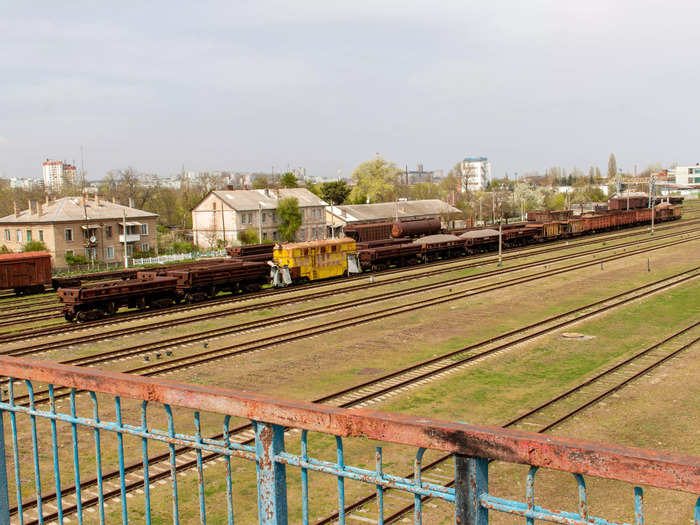
Soviet-era train cars at the station in Bender Charles Davis/Insider
It is also home to one of the largest ammunition depots in Europe, a relic of the Soviet Union that Russia has cited to justify its military presence.
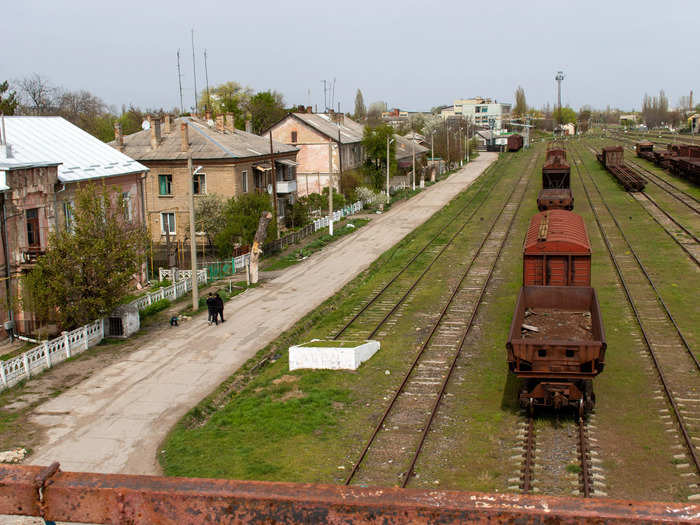
Train cars in Bender Charles Davis/Insider
In late April, Transnistrian authorities claimed the area around the arms depot was attacked and that surveillance drones had been launched from Ukraine.
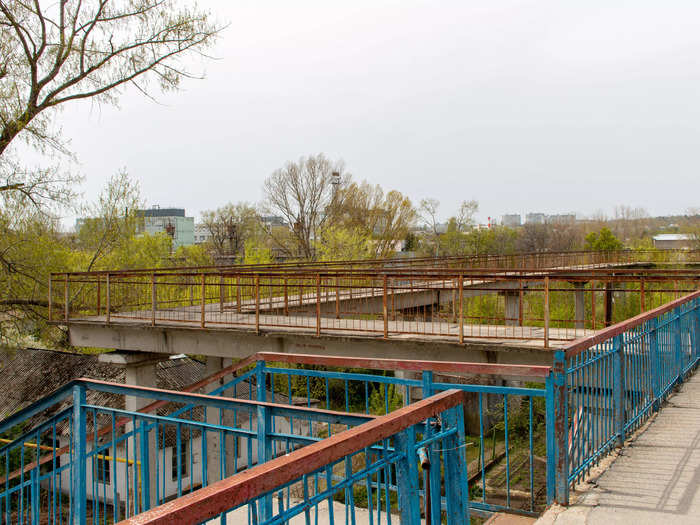
Elevated walkway in Bender Charles Davis/Insider
Ukraine denies that it has launched any attacks inside Transnistria.
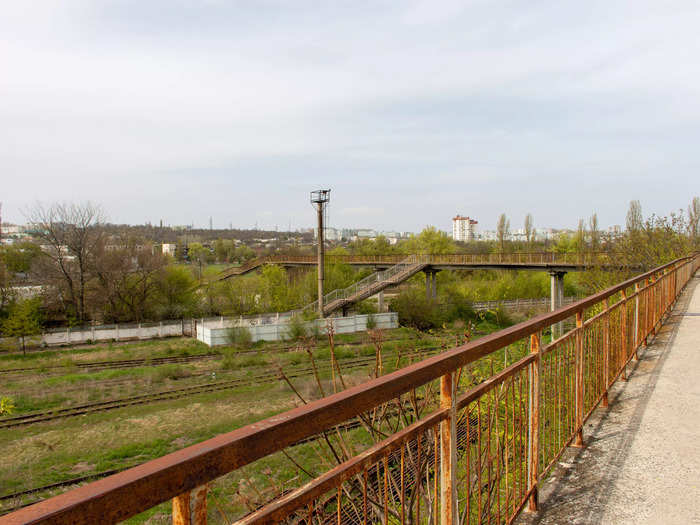
Elevated walkway in Bender Charles Davis/Insider
Some military experts believe the alleged attacks have been carried out by Russia to either justify intervention or divert Ukraine's attention.
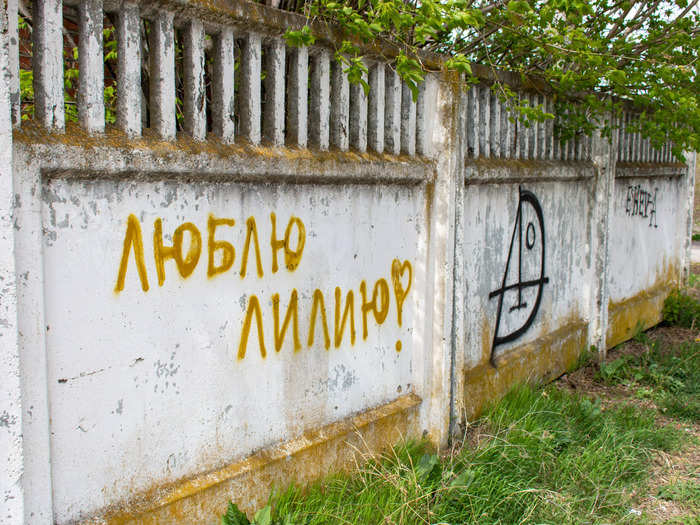
Graffiti in Bender Charles Davis/Insider
The attacks have contributed to a desire by Moldovan authorities to strengthen their military capabilities.
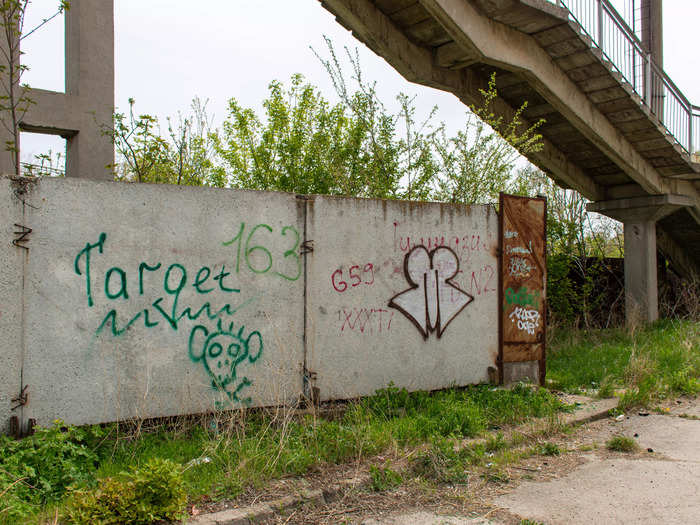
Graffiti on a wall near the cargo train station in Bender. Charles Davis/Insider
Transnistrian authorities have long expressed a desire to join Russia, with Russian flags hanging on government buildings in the capital, Tiraspol.
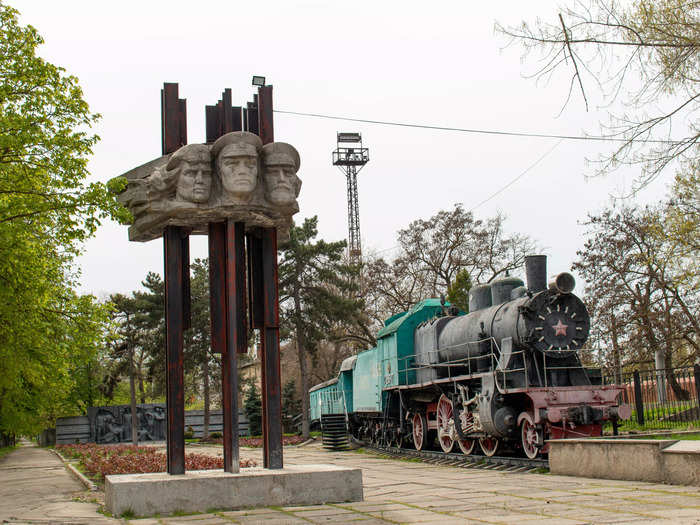
Train museum in Bender Charles Davis/Insider
But Transnistrian officials have not explicitly endorsed Russia's intervention in Ukraine.
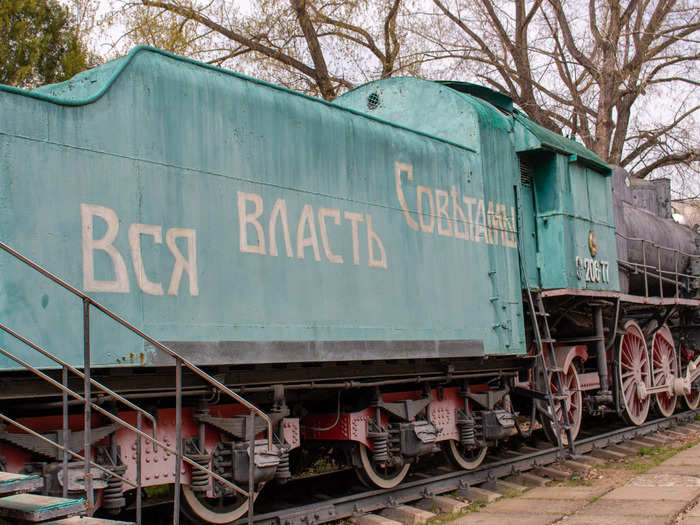
Train museum in Bender Charles Davis/Insider
Tens of thousands of Ukrainians live in Transnistria, including recent refugees.
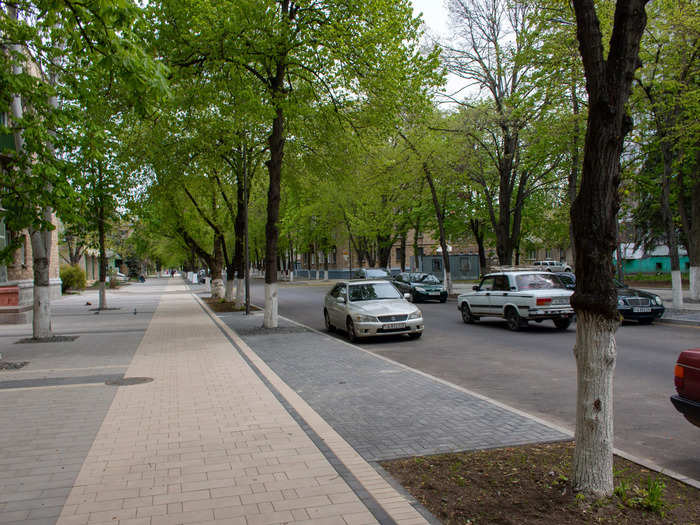
Lenin Street in Bender Charles Davis/Insider
The only public sign of the war in Ukraine are the Ukrainian license plates on vehicles driven by recent arrivals.
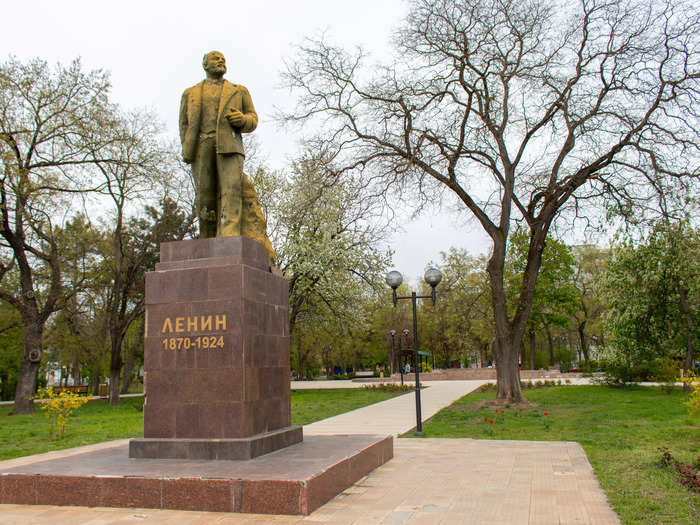
A statue of Soviet leader Vladimir Lenin at a park in Bender, Transnistria. Charles Davis/Insider
Despite its political isolation, the region does not appear more economically depressed than Moldova.
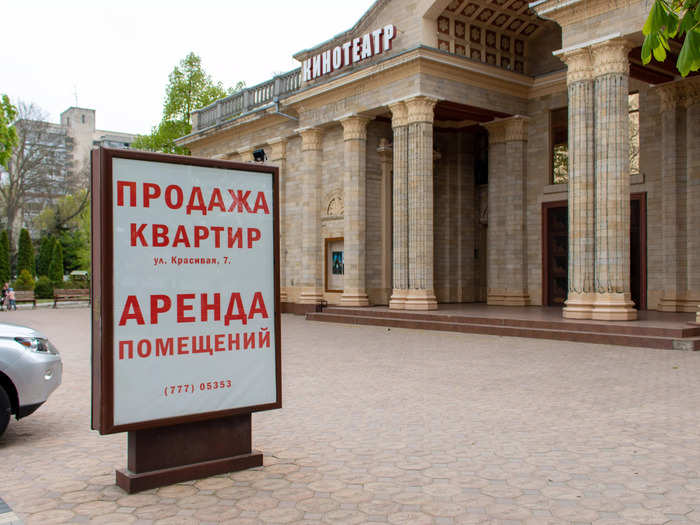
A movie theater in Bender plays some of the latest films from Hollywood and Russia. Charles Davis/Insider
Clean streets are lined with cinemas, cafes, and restaurants.

A movie poster at the cinema in Bender. Charles Davis/Insider
The streets are also full of modern luxury vehicles.
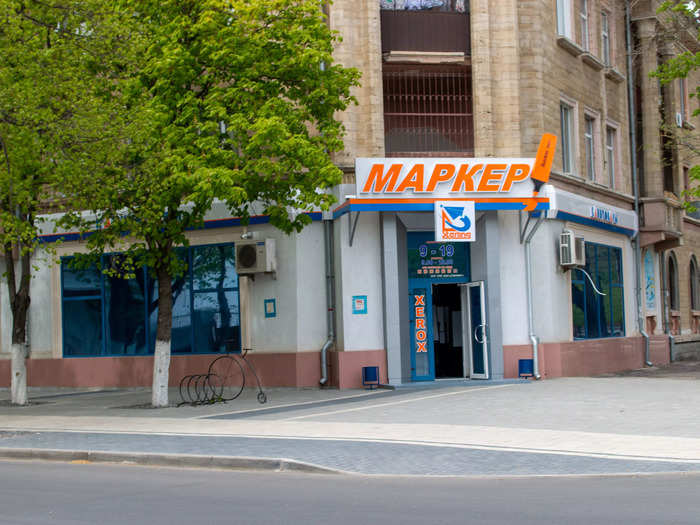
A copy and printing shop in Bender. Charles Davis/Insider
What you won't find in Transnistria are many international corporations, with Russian banks dominating the financial sector.
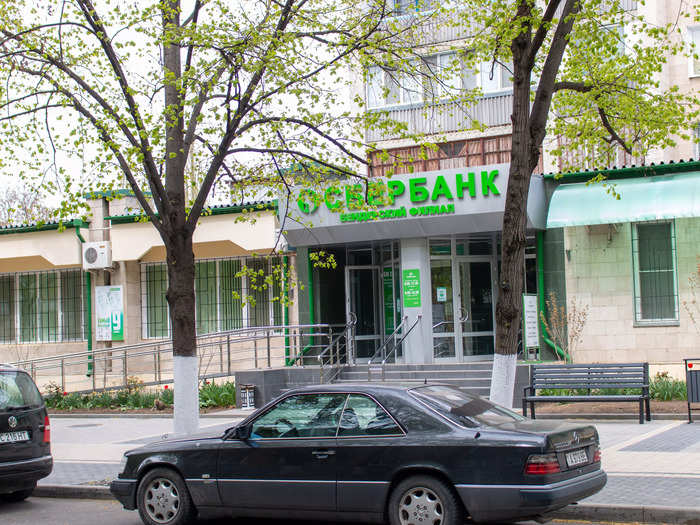
Charles Davis/Insider
Many in Transnistria enjoy Russian, Moldovan, and Romanian citizenship, the latter allowing them to travel visa-free to Europe.
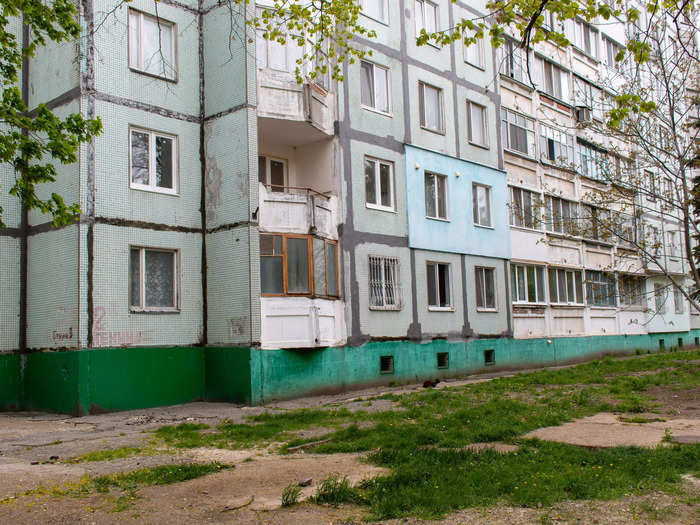
Bender apartment building Charles Davis/Insider
Despite Russia's support, Transnistria enjoys close connections with Europe, with a majority of its exports going to the European Union.
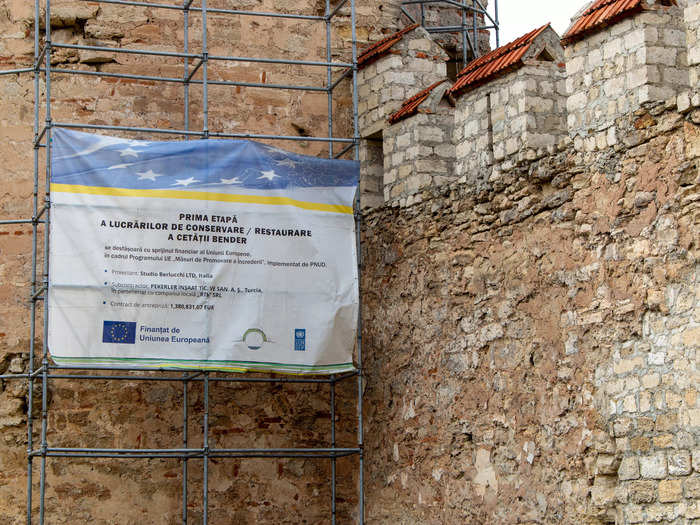
EU project at Bender Fortress. Charles Davis/Insider
Insider witnessed European Union projects intended to boost Transnistria's tourism industry.
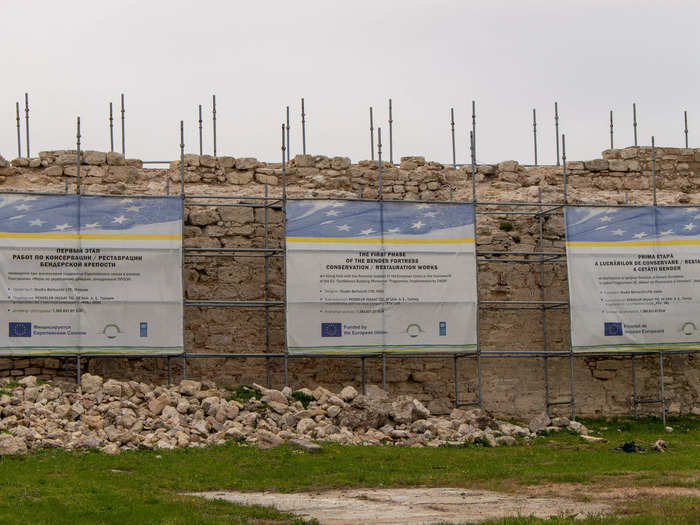
Signs advertise European Union support for a reconstruction project at the Ottoman-era fortress in Bender. Charles Davis/Insider
Russian soldiers and local volunteers collaborate at military bases in Transnistria.
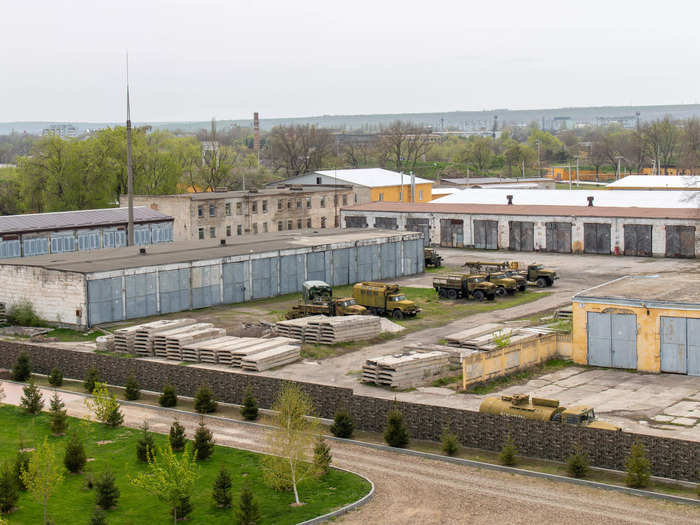
Bender military base. Charles Davis/Insider
Military equipment can be see from a tower at the Ottoman-era fortress in Bender.
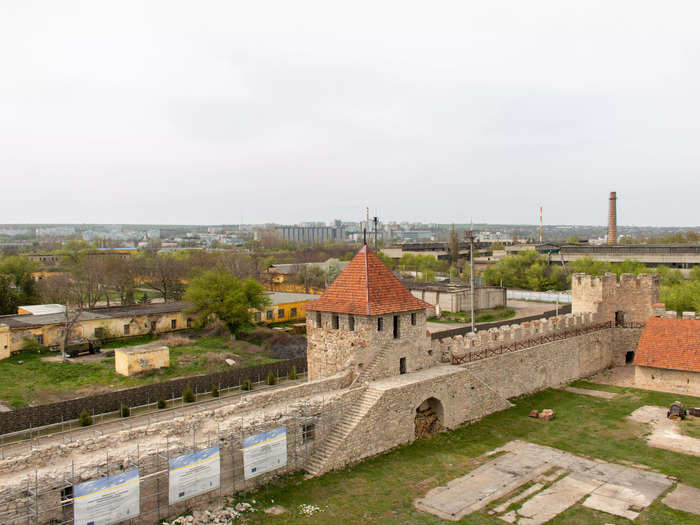
Bender Fortress in Transnistria. Charles Davis/Insider
Although they undergo regular combat exercises, troops in Transnistria rely on old, Soviet-era equipment.

Military equipment can be see on a base used by Russian forces in Bender, Transnistria. Charles Davis/Insider
The majority of Transnistria is located on the eastern side of the Dniester River.
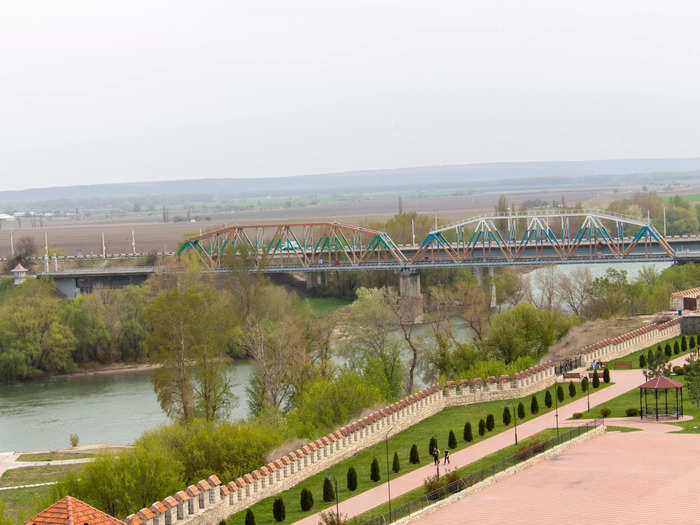
A bridge in Bender, Transnistria, is painted in the colors of the Russian and local flags. Charles Davis/Insider
For the last 30 years, residents have been taught that Moldova tried to wipe out the area's Russian speakers.
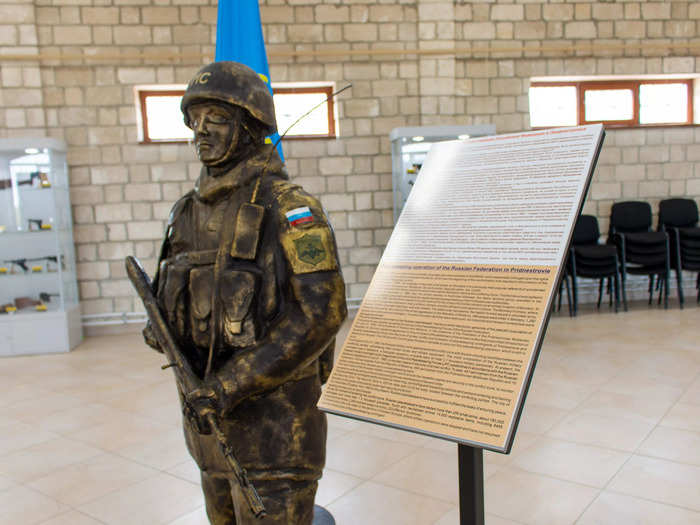
A museum at the Ottoman-era Bender Fortress in Transnistria celebrates Russian intervention. Charles Davis/Insider
Nearly all business in Transnistria is controlled by oligarchs, with the "Sheriff" brand on supermarkets and football stadiums.

Supermarket in Tiraspol. Charles Davis/Insider
Moldovan authorities have suggested there is an elite split in Transnistria between military and economic powers.
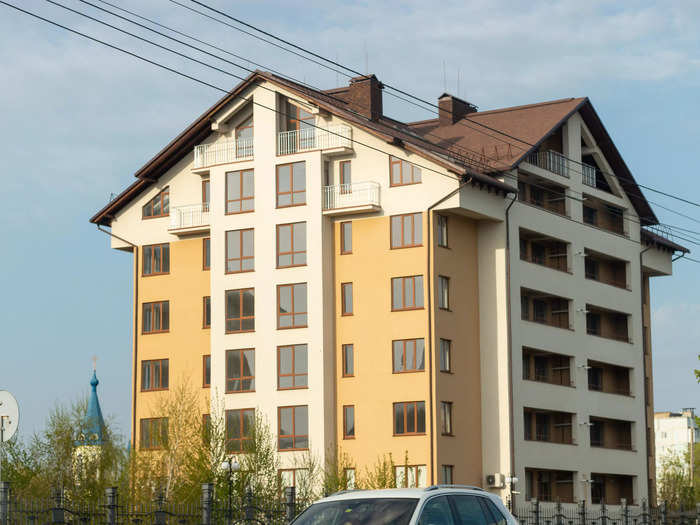
A building believed to house military officers in Transnistria. Charles Davis/Insider
Despite some uses of Soviet-era imagery, Transnistria practices Russian-style capitalism.
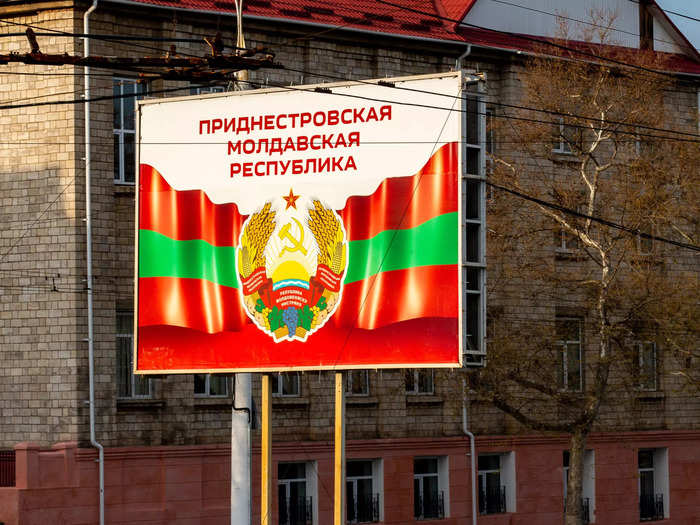
A billboard in Tiraspol welcomes visitors to the "Pridnestrovian Moldavian Republic." Charles Davis/Insider
Leaders are more nostalgic for the pre-communist Russian Empire than they are for the Soviet Union.
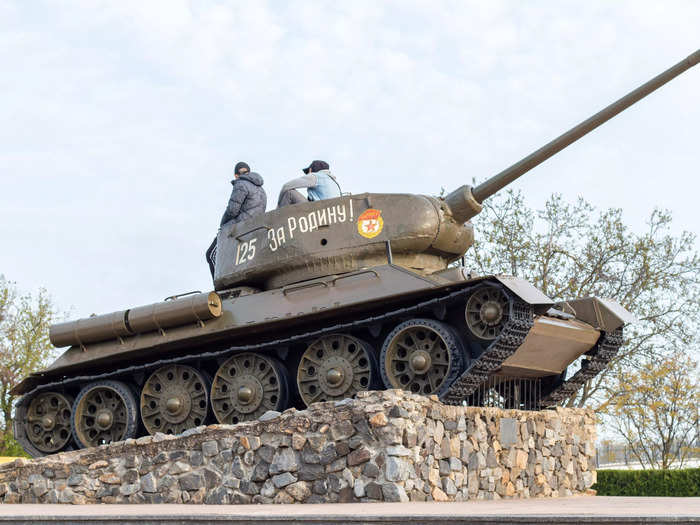
A tank monument in Tiraspol celebrates Russia's "Great Patriotic War" and the defeat of Nazi Germany in World War II. Charles Davis/Insider
Russian and Transnistrian flags wave in Suvorov Square in Tiraspol, the self-proclaimed capital.

Suvorov Square in Tiraspol on April 23, 2022. Charles Davis/Insider
Photographing government buildings in Transnistria is discouraged.
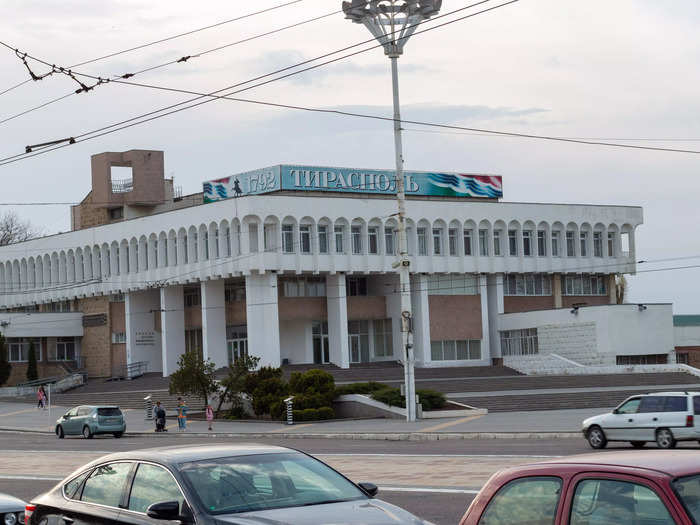
A government building in Tiraspol, Transnistria. Charles Davis/Insider
On a Saturday in April, streets were full of cars, including a BMW drivers' club, and sidewalks full of pedestrians.
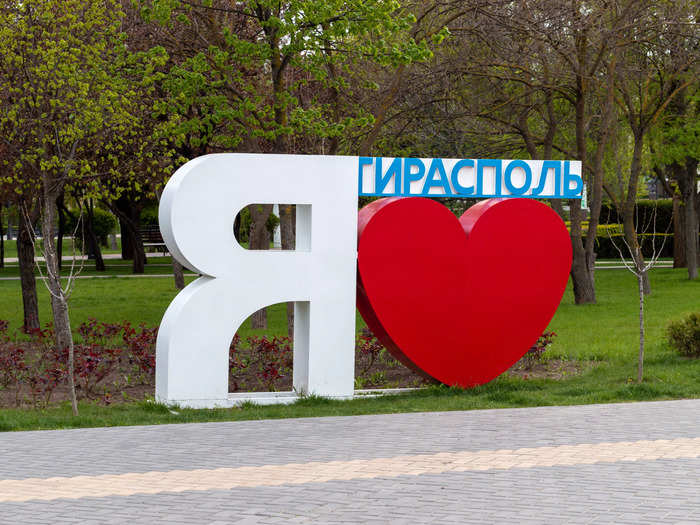
A public monument in Tiraspol. Charles Davis/Insider
Tiraspol hosts consulates for Abkhazia and South Ossetia, two other Russian-allied separatist regions not recognized by the international community.
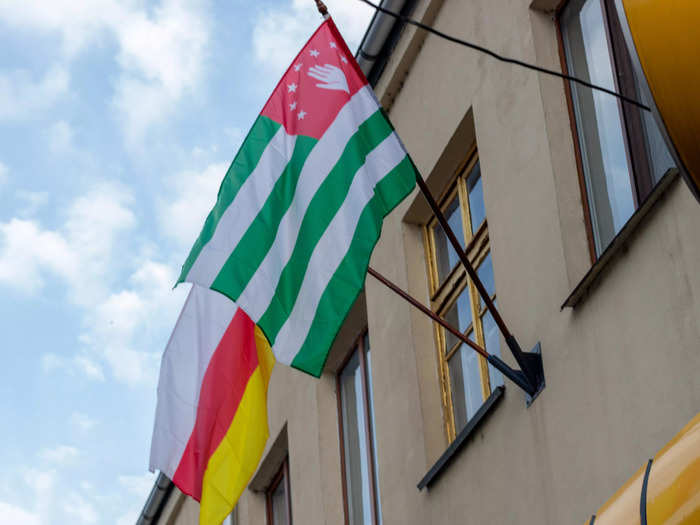
tk Charles Davis/Insider
A menu advertises Russian and Ukrainian cuisine in Tiraspol.
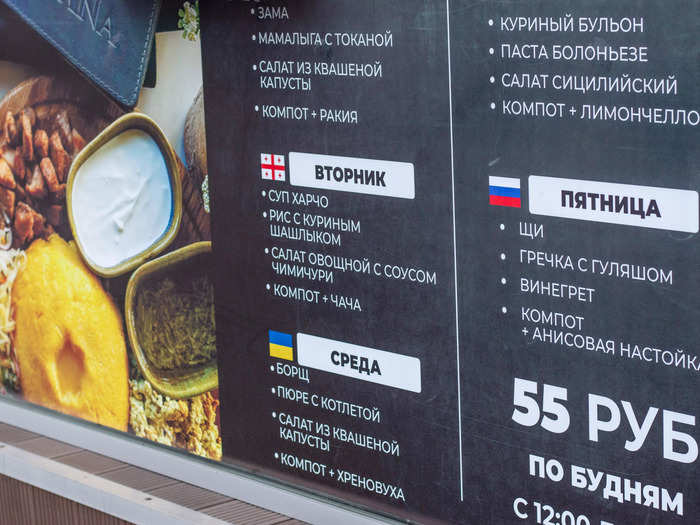
Restaurant in Tiraspol. Charles Davis/Insider
Because it is not an internally recognized state, Transnistria cannot have its currency produced by reputable printers, forcing it to turn to plastic tokens like those used in casinos.
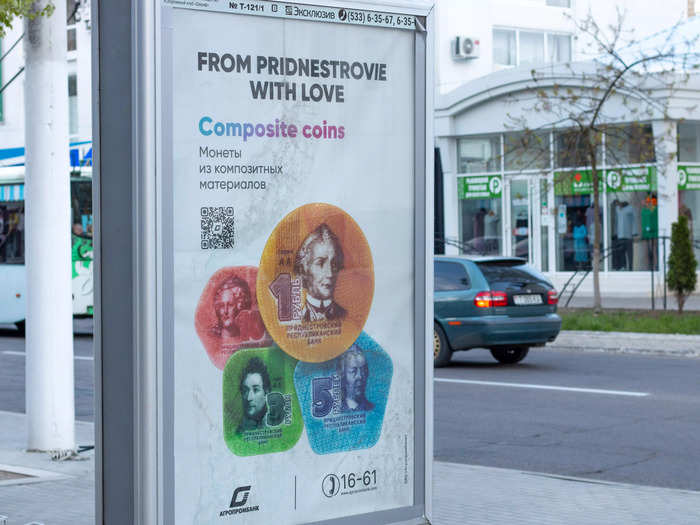
An ad for the Transnitrian currency in Tiraspol. Charles Davis/Insider
The airport in Tiraspol is not open to commercial aviation and was recently the target of a claimed attack.
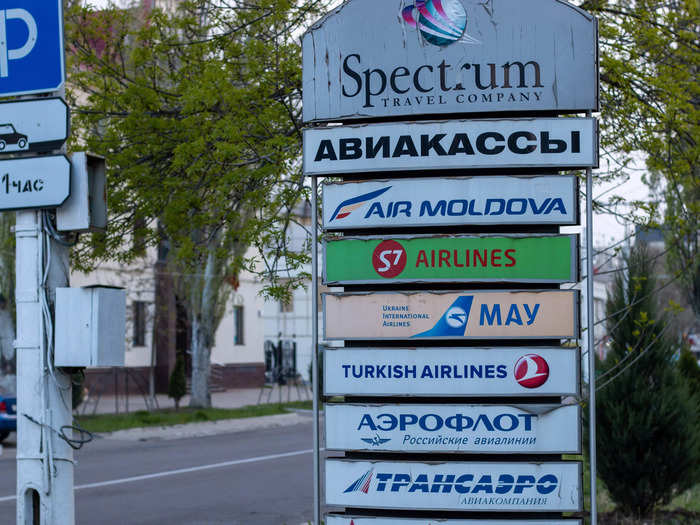
A travel company in Tiraspol. Charles Davis/Insider
In light of recent explosions, Moldovan authorities have stepped up searches of vehicles leaving Transnistria.
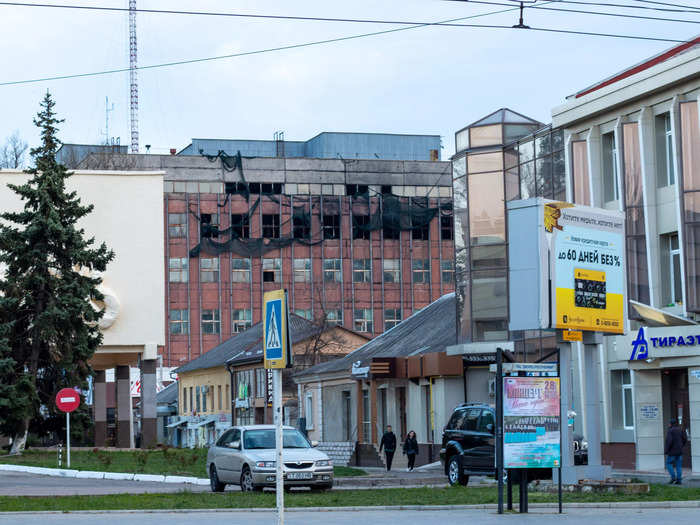
A building destroyed by fire can be seen from the main street in Tiraspol. Charles Davis/Insider
A monument to the 18th-century Russian general Alexander Suvorov is located in the center of Tiraspol.
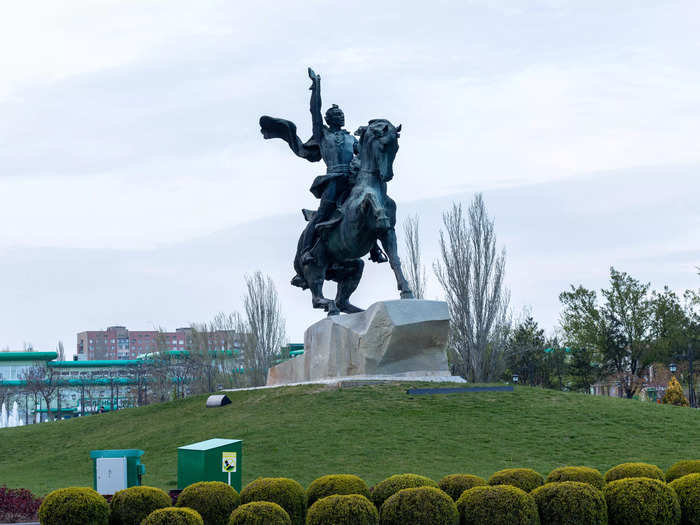
Suvorov Square in Tiraspol. Charles Davis/Insider
Transnistria is formally known as the Pridnestrovian Moldavian Republic.
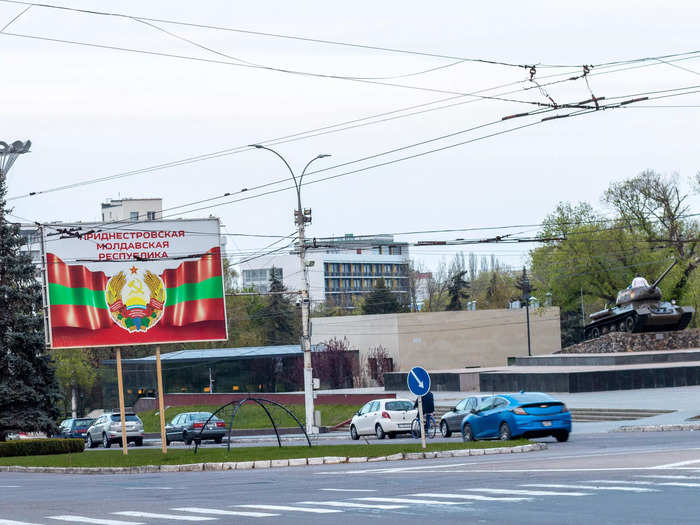
A billboard welcoming people to Transnistria in front of the tank monument in Tiraspol. Charles Davis/Insider
New buildings feature modern architecture that would not be out of place in US or European cities.
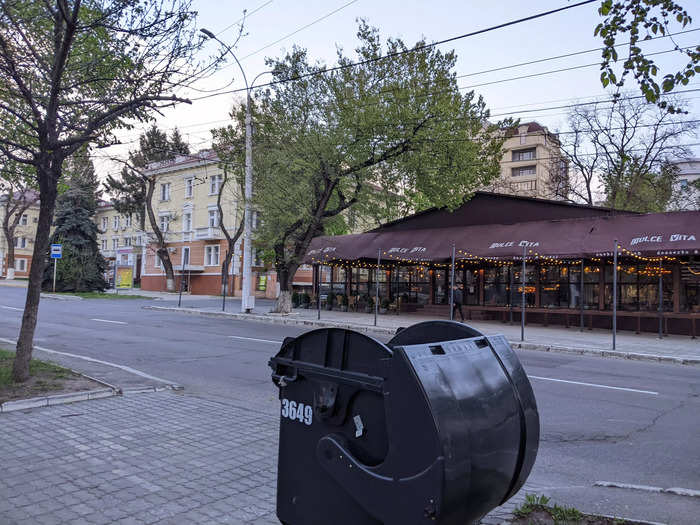
A high-end restaurant in Tiraspol. Charles Davis/Insider
The House of Soviets in Tiraspol is today used as the city hall.
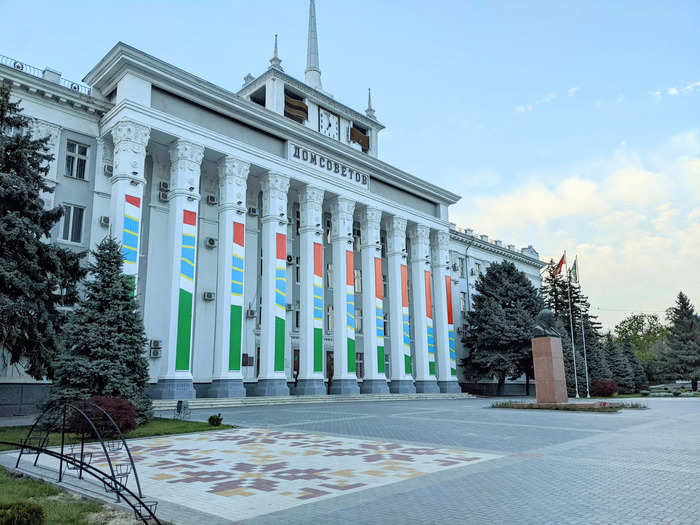
The House of Soviets in Tiraspol. Charles Davis/Insider
READ MORE ARTICLES ON
Popular Right Now
Popular Keywords
Advertisement